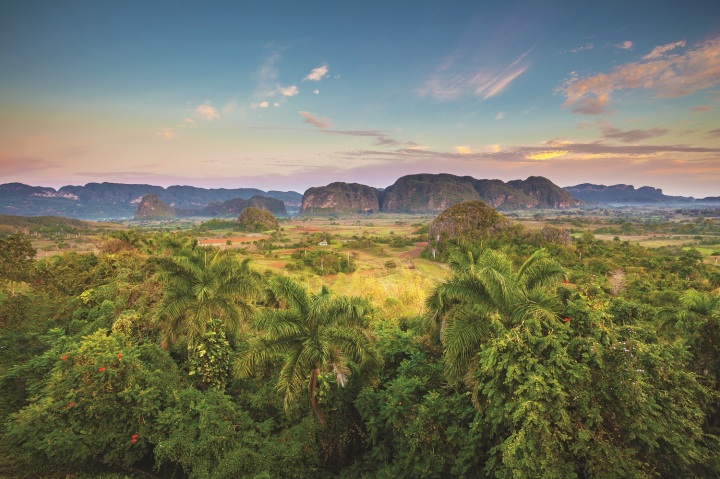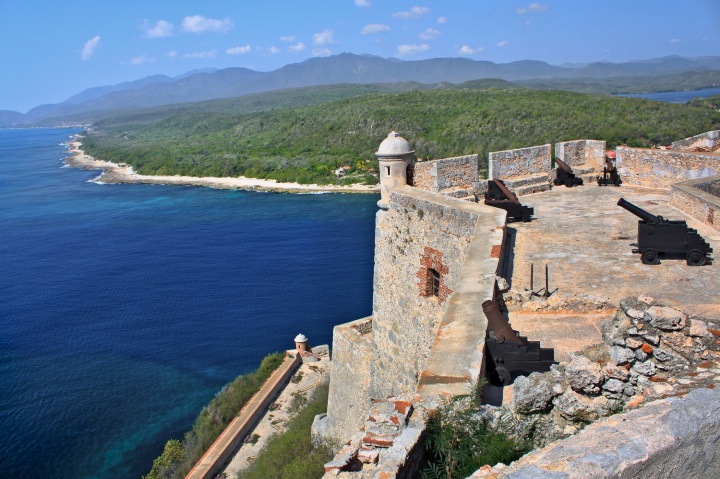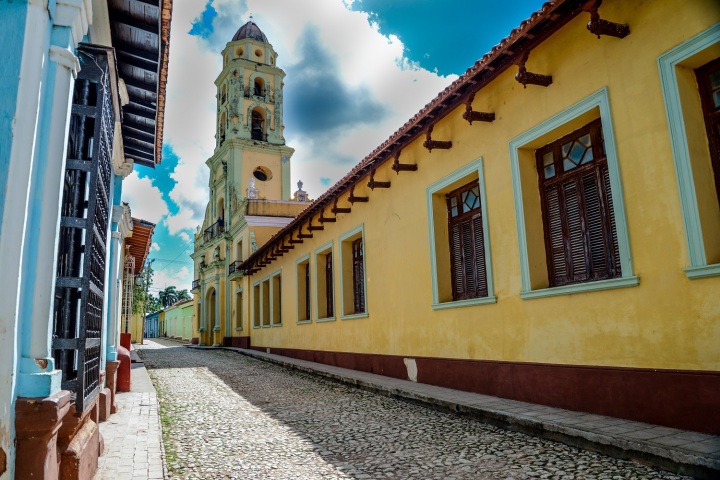To travelers around the world, Cuba conjures a particular atmosphere – architecture of another time, cultural legacies alive in the people, tropical rhythms in the streets, a fascinating past that endures across the island. More than anything else, Cuba is a place to arrive and soak up the culture, history, and experiences with the locals. Below are our top five UNESCO World Heritage sites to explore in Cuba during one of our voyages to this intriguing island.
1. Old Havana and its Fortifications
Havana, founded in 1519 by the Spanish crown, invites you to discover a complex mosaic of colors and rhythms, and an interesting mix of Baroque, neo-classical, and Renaissance architecture. Old Havana, La Habana Vieja, is a true joy to simply stroll around – visit the Plaza de Armas, Plaza Vieja, Plaza de San Francisco and Plaza de la Catedral. Around the plazas don’t miss the Iglesia Catedral de La Habana, Antiguo Convento de San Francisco de Asís and Palacio de los Capitanes Generales. The Caribbean charm in these areas is mesmerizing.
2. Viñales Valley | Available from Havana
Declared a UNESCO World Heritage site and known as a national monument, Viñales Valley is a unique landscape surrounded by hills with vertical sides and rounded tops, called mogotes (pin-cushion hills). Take a deep breath and experience nature in this lovely valley covered with rich, red earth tones and majestic palm trees in the Pinar del Río province. Accessible from Havana, this is one of Cuba’s most fertile areas and where some of the world’s best tobacco is grown, harvested, dried and processed.

3. San Pedro de la Roca Castle, Santiago de Cuba
The Castillo de San Pedro de la Roca del Morro, a UNESCO World Heritage site since 1997, offers stunning views from the upper terrace, where you will be able to take in Santiago de Cuba’s coastline backed by the velvety Sierra Maestra. Designed in 1587 by the famous Italian military engineer Juan Bautista Antonelli (who also designed La Punta and El Morro forts in Havana), the fortress was built to protect Santiago de Cuba from pirates who had successfully sacked the city in 1554.

4. Urban Historic Centre of Cienfuegos
Every Latin American city or town has a central plaza, and Cienfuegos is no exception. Soak up the elegance and the fusion of the city’s French and Caribbean spirit with a stroll through Parque José Martí (formerly Plaza de Armas). Surrounded by significant governmental and religious structures, this extraordinary example of 19th-century urban planning principles in the Americas was initially established when Cienfuegos was founded in 1819. The plaza was later renamed in honor of the father of Cuban independence, José Martí, at the beginning of the 20th century.
5. Trinidad and the Valley de los Ingenios |Available from Cienfuegos
Trinidad is a one-of-a-kind, perfectly preserved Spanish colonial settlement near Cienfuegos. With the Sierra del Escambray as a backdrop, traveling to this region of the country without visiting the Valley de los Ingenios is unimaginable. Learn about the Cuban sugar-producing industry while exploring the ruins of dozens of 19th-century sugar mills, including warehouses, milling machinery, slave quarters, manor houses, and a fully functioning steam train. You might even have a chance to see the Manaca Iznaga Tower – a leaning structure that resembles the Tower of Pisa in Italy. Though some sugar is still grown here, the valley is famous today for its historical significance and UNESCO World Heritage status.



Wow did not realize how much hidden historical treasures there were in Cuba!! Thanks for sharing Oceania!
LikeLike